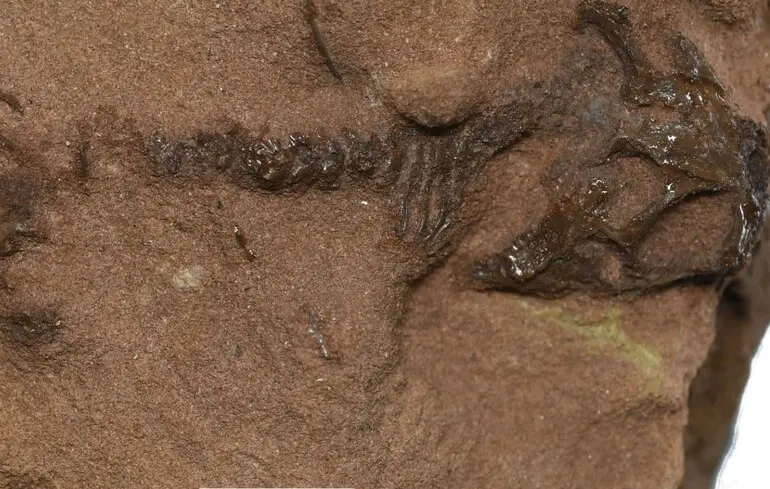Ancient Creature Preceding the Dinos: Fossil Discovery of a Reptile Lived 240 Million Years Ago

A groundbreaking discovery sheds new light on the evolutionary history of reptiles.
Recent excavations in ancient sandstone layers have uncovered the remains of an astonishing creature that roamed Earth around 240 million years ago — long before the emergence of dinosaurs.
This tiny reptile, resembling modern lizards, is identified as the earliest known example of lepidosaurs, a group of ancient reptiles that predate the age of dinosaurs and play a significant role in paleontological studies.Scientists revealed that the fossilized skeleton and nearly complete skull found in the sandstone layers provide valuable insights into the origins of lizard-like reptiles.
The specimen, named Agriodontosaurus helsbypetrae or “the lizard with sharp teeth from the Gelsby formation,” features triangular teeth likely used for piercing and cutting the hard cuticle of insects, much like modern tuataras.
According to Dr.
Michael Benton of Bristol University, this newly described species challenges previous assumptions about reptile evolution, displaying features unlike any previously known fossils.The discovery also confirms the existence of a temporal bone bridge similar to the zygomatic arch, although the palate lacked teeth and lacked joint-like structures typical of early lepidosaurs.
Notably, its teeth were remarkably large, prompting new questions about its feeding behavior and ecological niche.This find represents a vital step toward understanding the ancestors of lepidosaurs and strongly supports the idea that tuataras, often called “living fossils,” are remnants of a once-diverse group of ancient reptiles with a rich evolutionary history.
Earlier studies from Yale University have indicated that some members of the Xantusiidae family, such as night lizards, survived the asteroid impact that caused the mass extinction 66 million years ago.Overall, this discovery enriches our knowledge of prehistoric reptilian evolution and their role in Earth’s extensive biological history, spanning over two hundred million years.

